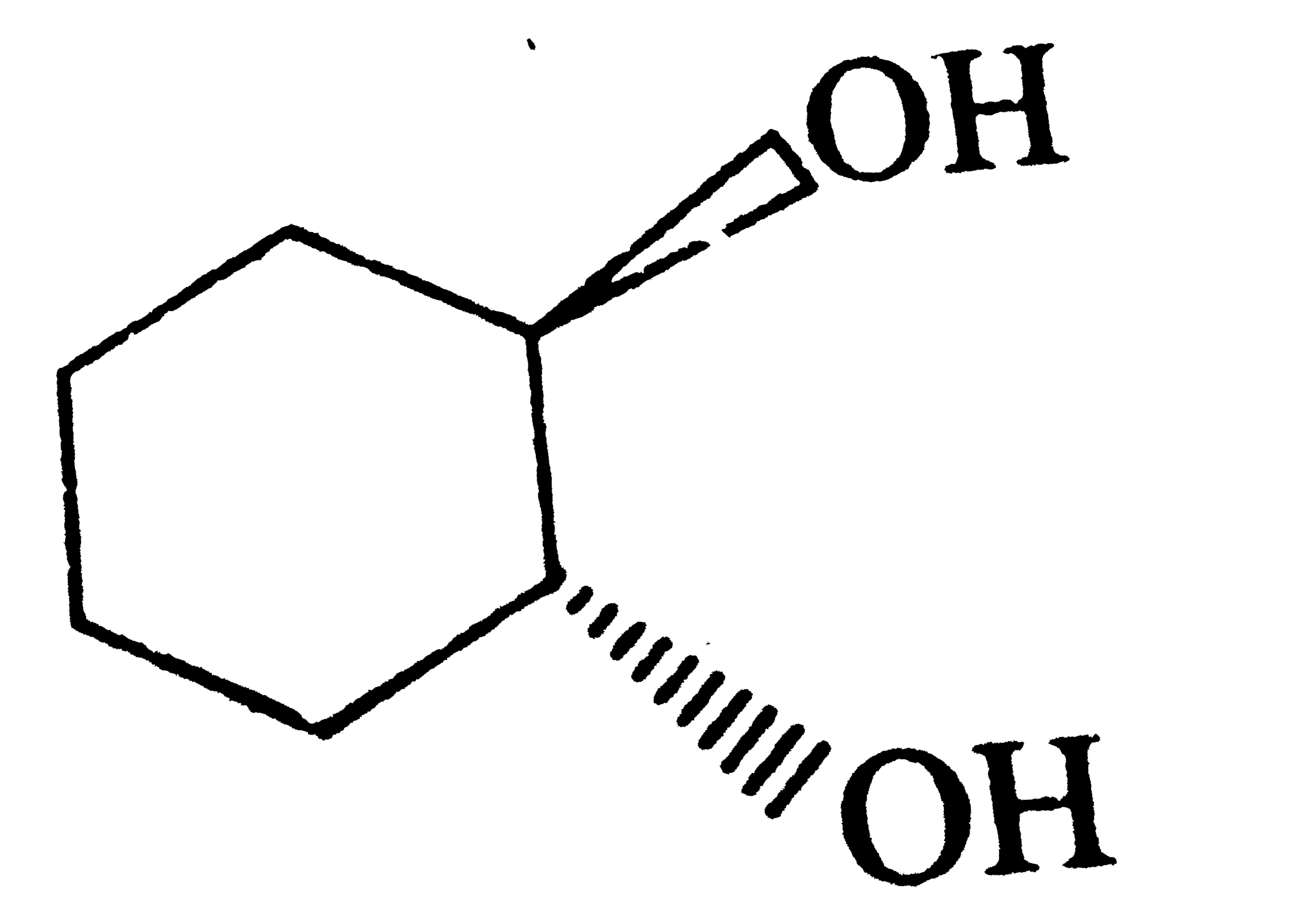Compounds containing which of the following functional groups can exhibit geometrical isomerism ?
>C=C<
>C=N−
−N=N−
All the three above
The correct Answer is:D
To determine which functional groups can exhibit geometrical isomerism, we need to understand the concept of geometrical isomerism and the conditions under which it occurs.
1. Understanding Geometrical Isomerism:
- Geometrical isomerism occurs when there is restricted rotation around a bond, typically a double bond (C=C) or in cyclic compounds. This restriction leads to different spatial arrangements of the atoms or groups attached to the double-bonded carbons or within the ring.
2. Identifying Functional Groups:
- The functional groups that can exhibit geometrical isomerism are:
- C=C (Carbon-Carbon Double Bond): This is the most common functional group that shows geometrical isomerism. For example, in butene (C4H8), we can have cis and trans isomers depending on the arrangement of substituents around the double bond.
- C=N (Carbon-Nitrogen Double Bond): Similar to C=C, the C=N bond can also exhibit geometrical isomerism if there are different groups attached to the carbon and nitrogen.
- N=N (Nitrogen-Nitrogen Double Bond): This bond can also show geometrical isomerism, particularly in diazo compounds where different groups are attached to the nitrogen atoms.
- Cyclic Compounds: In cyclic compounds, if there are substituents on the ring, they can also exhibit geometrical isomerism due to the fixed positions of the substituents.
3. Examples:
- C=C Example: Consider 2-butene (C4H8). The cis isomer has both CH3 groups on the same side, while the trans isomer has them on opposite sides.
- C=N Example: In an imine, if we have R1 and R2 groups on carbon and an OH group on nitrogen, we can have cis and trans configurations based on their positions.
- N=N Example: In diazene (H2N-NH2), the arrangement of hydrogen atoms can lead to different isomers.
- Cyclic Example: In cyclohexene, substituents can be positioned either on the same side (cis) or opposite sides (trans) of the ring.
4. Conclusion:
- All the mentioned functional groups (C=C, C=N, N=N, and cyclic compounds) can exhibit geometrical isomerism.
Final Answer:
Compounds containing the following functional groups can exhibit geometrical isomerism:
- C=C (Carbon-Carbon Double Bond)
- C=N (Carbon-Nitrogen Double Bond)
- N=N (Nitrogen-Nitrogen Double Bond)
- Cyclic compounds
Thus, the correct answer is that all the three functional groups mentioned can exhibit geometrical isomerism.
- Geometrical isomerism occurs when there is restricted rotation around a bond, typically a double bond (C=C) or in cyclic compounds. This restriction leads to different spatial arrangements of the atoms or groups attached to the double-bonded carbons or within the ring.
- The functional groups that can exhibit geometrical isomerism are:
- C=C (Carbon-Carbon Double Bond): This is the most common functional group that shows geometrical isomerism. For example, in butene (C4H8), we can have cis and trans isomers depending on the arrangement of substituents around the double bond.
- C=N (Carbon-Nitrogen Double Bond): Similar to C=C, the C=N bond can also exhibit geometrical isomerism if there are different groups attached to the carbon and nitrogen.
- N=N (Nitrogen-Nitrogen Double Bond): This bond can also show geometrical isomerism, particularly in diazo compounds where different groups are attached to the nitrogen atoms.
- Cyclic Compounds: In cyclic compounds, if there are substituents on the ring, they can also exhibit geometrical isomerism due to the fixed positions of the substituents.
- C=C Example: Consider 2-butene (C4H8). The cis isomer has both CH3 groups on the same side, while the trans isomer has them on opposite sides.
- C=N Example: In an imine, if we have R1 and R2 groups on carbon and an OH group on nitrogen, we can have cis and trans configurations based on their positions.
- N=N Example: In diazene (H2N-NH2), the arrangement of hydrogen atoms can lead to different isomers.
- Cyclic Example: In cyclohexene, substituents can be positioned either on the same side (cis) or opposite sides (trans) of the ring.
- All the mentioned functional groups (C=C, C=N, N=N, and cyclic compounds) can exhibit geometrical isomerism.
Compounds containing the following functional groups can exhibit geometrical isomerism:
- C=C (Carbon-Carbon Double Bond)
- C=N (Carbon-Nitrogen Double Bond)
- N=N (Nitrogen-Nitrogen Double Bond)
- Cyclic compounds
Topper's Solved these Questions
- BOOK - MOTIONCHAPTER - ISOMERISMEXERCISE - Exercise 250videos
ISOMERISM
- BOOK - MOTIONCHAPTER - ISOMERISMEXERCISE - Exercise 321videos
ISOMERISM
- BOOK - MOTIONCHAPTER - ISOMERISMEXERCISE - Exercise 426videos
ISOMERISM
- BOOK - MOTIONCHAPTER - IONIC EQUILIBRUIMEXERCISE - Exercise -4 (Level -II)14videos
IONIC EQUILIBRUIM
- BOOK - MOTIONCHAPTER - LIQUID SOLUTIONEXERCISE - EXERCISE-4 (Level-II) PREVIOUS YEAR JEE ADVANCED19videos
LIQUID SOLUTION
Similar Questions
Knowledge Check
- Question 1 - Select One or More
Which of the following compounds can exhibit geometrical isomerism?
A B
B C
C D
D
- Question 2 - Select One
Which of the following complex compound exhibits geometrical isomerism ?
A[CoCl(NH3)4(H2O)]B[CoCl3(NH3)3]C[CoCl2(NH3)4]DAll of these - Question 3 - Select One
Which of the following complex compound exhibits geometrical isomerism ?
A[CoCl(NH3)4(H2O)]B[CoCl3(NH3)3]C[CoCl2(NH3)4]DAll of these
Which of the following species can not exhibit geometrical isomerism ?
View SolutionWhich of the following complexes would exhibit only geometrical isomerism ?
View SolutionWhich of the following complexes would exhibit only geometrical isomerism ?
View SolutionWhich of the following compounds will exhibits geometrical isomerism ?
View SolutionWhich of the following compounds will exhibits geometrical isomerism ?
View Solution

